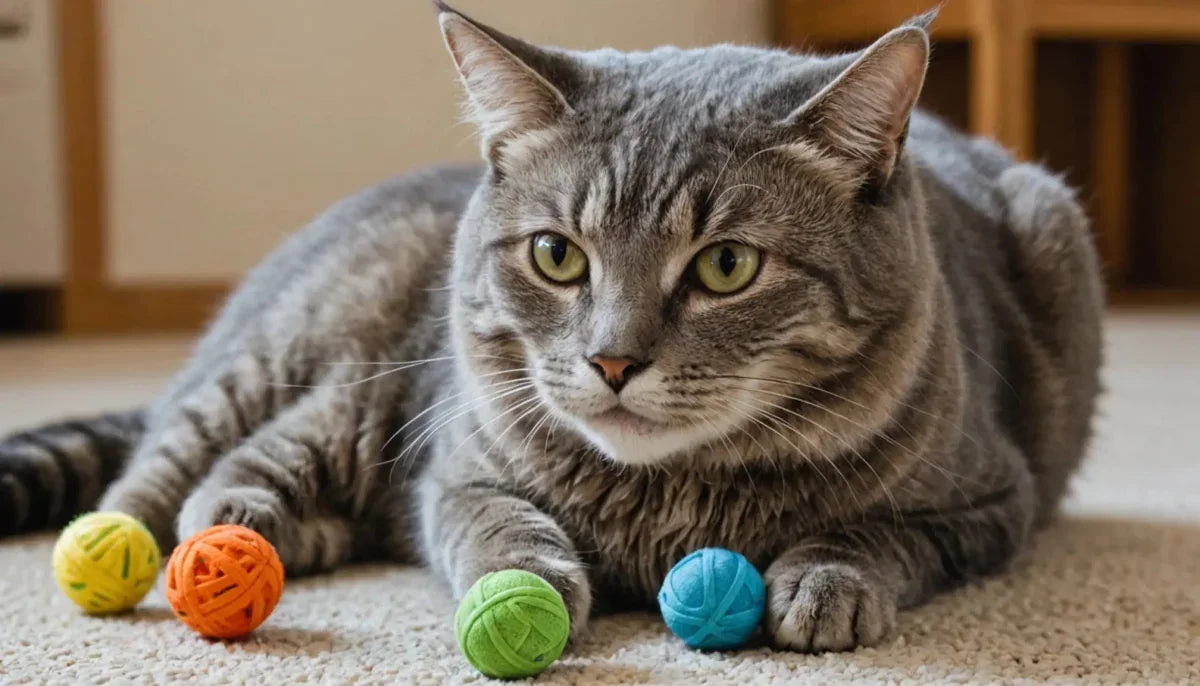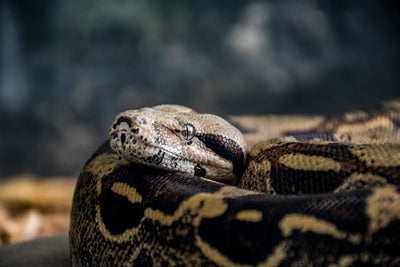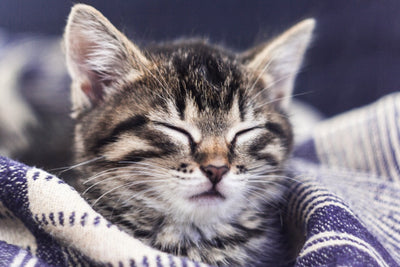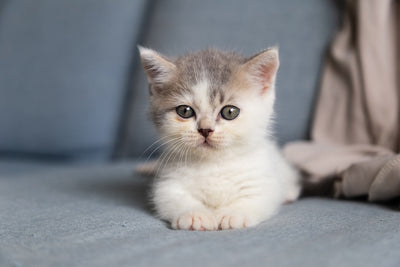
When it comes to providing enrichment for our feline companions, catering to their specific needs is vital. For deaf cats, engaging toys play a crucial role in keeping them mentally and physically stimulated. Understanding the unique challenges faced by hearing-impaired felines, selecting the right toys not only ensures their entertainment but also promotes their overall well-being. In this guide, we will explore a range of cat toys specially designed to captivate the senses of deaf cats, offering them the opportunity to engage in play that is both fun and safe. From visually stimulating toys to tactile experiences, each toy serves a specific purpose in enhancing the lives of our beloved deaf feline friends. Join us on a journey to discover the world of cat toys for deaf cats, where every playtime moment becomes a chance for joy and fulfillment.
Sensory Toys for Deaf Cats
Deaf cats rely heavily on their other senses to navigate the world around them. Providing sensory toys specifically designed for their unique needs can greatly enrich their quality of life. In this section, we will explore two types of sensory toys that are particularly beneficial for deaf cats: Visual Stimulation Toys and Tactile and Interactive Toys.
Visual Stimulation Toys
Visual stimulation toys are essential for engaging a deaf cat's sense of sight. Toys that incorporate bright colors, interesting patterns, and varying textures can capture their attention and provide mental stimulation. Examples of visual stimulation toys include colorful feather wands, laser pointers, and motion-activated toys that light up or move. These toys not only provide visual engagement but also promote physical activity, keeping your deaf cat active and healthy. It's important to rotate these toys regularly to maintain your cat's interest and prevent boredom.
Tactile and Interactive Toys
Tactile and interactive toys are crucial for deaf cats to engage their sense of touch and encourage physical activity. Toys that have different textures, shapes, and sizes can offer a range of tactile experiences. Interactive toys, such as treat puzzles or toys that dispense treats when played with, can provide mental stimulation and rewards for play. Consider introducing crinkle toys, soft fabric mice, or puzzle feeders to keep your deaf cat entertained and mentally sharp. These toys not only stimulate their sense of touch but also provide a cognitive challenge, enhancing their problem-solving skills.
In addition to visual and tactile toys, auditory toys can also be beneficial for deaf cats. While they may not respond to sounds, toys that produce vibrations or have unique textures can still engage them and create a multisensory experience. Experiment with different types of toys to see which ones your deaf cat enjoys the most.
By incorporating visual stimulation toys, tactile and interactive toys, and even auditory toys into a deaf cat's environment, you can help keep them mentally and physically active, prevent boredom, and strengthen the bond between you and your feline companion. Remember to supervise your cat during playtime to ensure their safety and enjoyment.
Auditory Replacement Toys
Toys with Vibrations or Lights
- The Impact of Vibrations on Auditory Stimulation: Delve into how toys incorporating vibrations or lights can enhance auditory senses in children, aiding in sensory development and engagement.
- Examples of Innovative Toys: Showcase leading examples of toys utilizing vibrations or lights to create an immersive auditory experience for children, promoting learning and play.
- Benefits Beyond Sound: Discuss how these toys can offer multi-sensory stimulation, benefiting children with varying needs.
- Therapeutic Applications: Explore the therapeutic benefits of toys with vibrations or lights in aiding children with sensory processing disorders, autism, or ADHD.
- Educational Value: Highlight how these toys can be used not just for play but also for educational purposes, such as teaching cause and effect or enhancing focus and attention.
Toys with Motion Sensors
- Enhancing Auditory Feedback: Explore how toys equipped with motion sensors can provide valuable auditory feedback, aiding in sensory processing for children facing challenges.
- Interactive Play Experiences: Highlight the interactive nature of motion sensor toys, enabling children with auditory impairments to engage more actively in play.
- Supporting Inclusive Play: Discuss the role of motion sensor toys in fostering inclusive play environments, where all children can participate and enjoy.
- Fine Motor Skill Development: Explain how playing with motion sensor toys can also aid in the development of fine motor skills and hand-eye coordination.
- Cognitive Benefits: Touch upon how these toys can enhance cognitive skills like problem-solving and spatial awareness through interactive play experiences.
Auditory replacement toys play a crucial role in supporting children's auditory development and sensory needs. By incorporating innovative features like vibrations, lights, and motion sensors, these toys offer a diverse range of benefits that extend beyond traditional play experiences. Through a combination of technology and thoughtful design, auditory replacement toys contribute to creating inclusive and engaging play opportunities for children of all abilities.
DIY Toy Ideas for Deaf Cats
Engaging DIY Toys Using Everyday Household Items
Deaf cats, just like any other cats, enjoy playtime, and it's important to create toys that cater to their unique needs. Crafting DIY toys for deaf cats can be a delightful and fulfilling experience. Here are some imaginative DIY toy ideas using common household items that you can easily create at home:.
-
Crinkle Balls : Repurpose old paper bags or tissue paper by crumpling them into small balls and placing them in a box. The crinkly texture will stimulate your deaf cat's senses of touch and sight.
-
Sock Fish : Transform a clean sock into a playful fish by filling it with catnip and tying a knot at the end. Draw fish scales using non-toxic markers to enhance its visual appeal. Your cat will have a great time swatting and pouncing on this fish toy.
-
Cardboard Scratcher : Make a simple scratcher by cutting strips of cardboard and stacking them together. Sprinkle a bit of catnip on the cardboard to entice your deaf cat to scratch and play.
Step-by-Step Guides for Crafting Interactive Toys
Designing DIY toys for your deaf cat can be a straightforward and fun process. Here are detailed step-by-step tutorials to assist you:.
-
DIY Feather Wand : Create a feather wand by attaching feathers to a string and securing it to a stick. Engage your cat by waving the wand to mimic bird-like movements. This visual toy will captivate your cat's attention.
-
Treat Puzzle Box : Upcycle a small cardboard box by cutting holes in it. Fill the box with treats and observe as your cat attempts to retrieve them. This toy encourages your cat's problem-solving abilities.
-
Interactive Felt Mat : Sew together various shapes of felt to form a mat. Conceal treats beneath the felt pieces and allow your cat to explore by lifting the shapes. This tactile toy is ideal for stimulating deaf cats.
Crafting these DIY toy ideas not only saves you money but also ensures that your deaf cat has engaging and tailored playthings. Let your creativity shine as you make toys that will provide endless entertainment and enrichment for your beloved feline companion!.
Safety Tips and Considerations
Choosing Non-Toxic Materials for Child Safety
When it comes to selecting toys for children, one of the most crucial considerations is opting for items made from non-toxic materials. Non-toxic toys are essential to ensure that children are not exposed to harmful substances during playtime. Look for labels indicating that the toys are. BPA-free ,. lead-free , and. phthalate-free To guarantee they are safe for children to play with.
The Importance of Non-Toxic Toys
Non-toxic toys are not only crucial for the safety of children but also for their overall health and well-being. Children, especially infants and toddlers, have a tendency to put toys in their mouths, increasing the risk of ingesting harmful chemicals. By choosing toys made from non-toxic materials, parents and caregivers can provide a safe play environment for children while promoting their healthy development.
Supervision and Regular Inspection of Toys
In addition to selecting non-toxic toys, it is equally important to supervise children while they play and conduct regular inspections of their toys. Toys with small parts can pose a choking hazard, making supervision essential to prevent accidents. Parents should actively engage with their children during playtime to ensure their safety and well-being.
Regularly inspect toys for any signs of wear and tear, such as broken parts or loose pieces. Damaged toys should be either repaired or discarded to prevent potential hazards. By maintaining a watchful eye and promptly addressing any toy-related issues, caregivers can create a secure play environment for children.
Educating Children on Toy Safety
Aside from selecting safe toys and monitoring playtime, educating children on toy safety is key to fostering responsible play habits. Teach children the importance of playing with toys as intended and the potential risks of misuse. Encourage them to respect their toys and show them how to properly care for and store their playthings.
Conclusion
By incorporating these safety tips and considerations into the selection and maintenance of children's toys, caregivers can ensure a secure and enjoyable play experience for children. Prioritizing non-toxic materials, supervision during play, regular toy inspections, and educational initiatives on toy safety are essential steps in safeguarding children's well-being and promoting a positive play environment.
Conclusion
It is essential for owners of deaf cats to select engaging toys that cater to their unique needs. By choosing toys that rely on visual or tactile stimulation rather than auditory cues, deaf cats can stay active, happy, and mentally stimulated. Remember to rotate the toys regularly to keep the environment enriching and prevent boredom. Investing in specialized cat toys for deaf felines can significantly enhance their quality of life and strengthen the bond between pet and owner.






